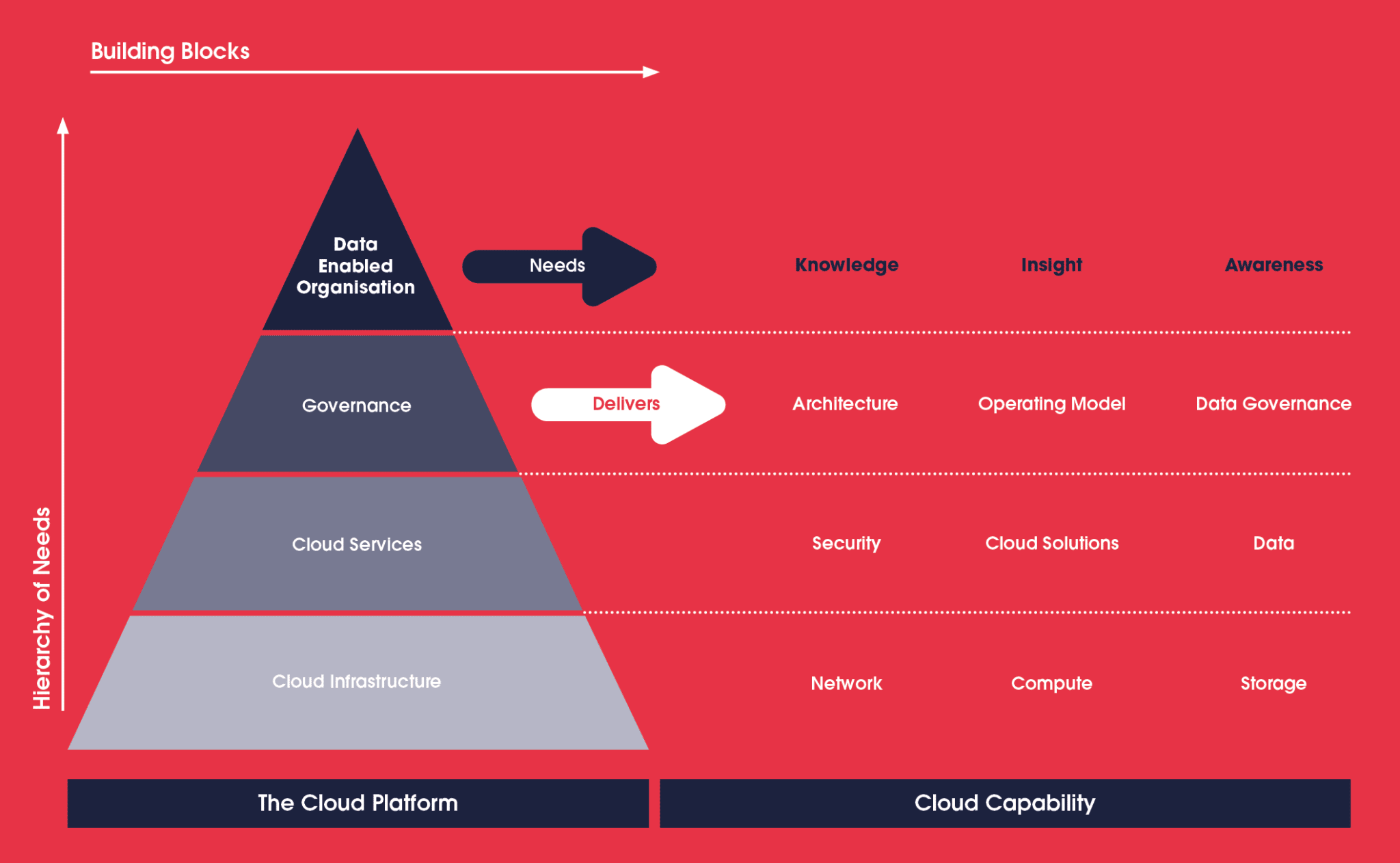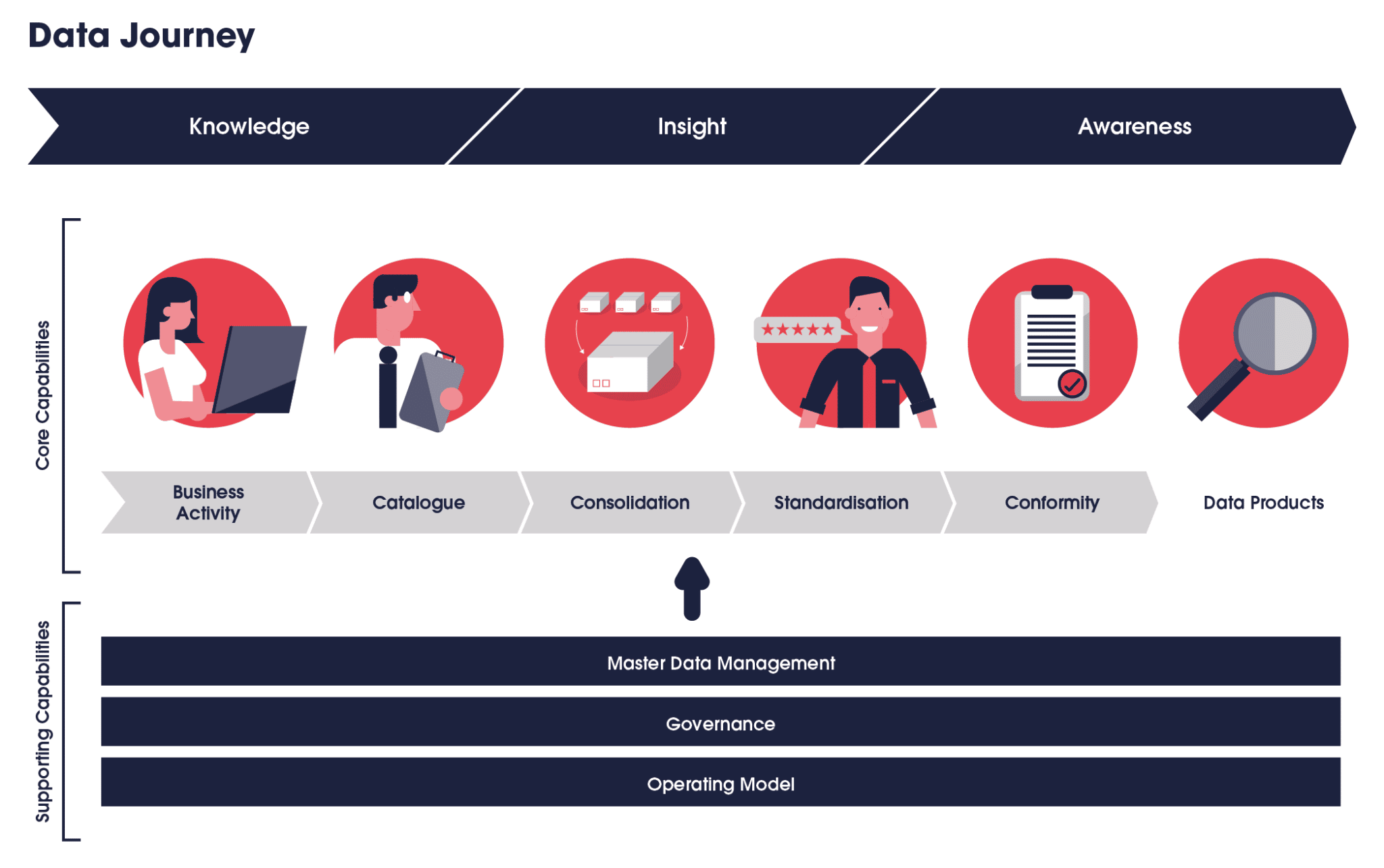Cloud-native platforms are an essential tool to help accelerate the execution of enterprises’ digitisation plans over the next 2-3 years. They are essential because improved access to cloud services enables the introduction of modern technologies with less operational burden than with legacy systems. They will expedite and facilitate the creation of innovative business solutions.
Adopting cloud-native platforms will provide the primary means for enterprises to execute their digital strategies. Thus enabling business growth, customer retention and efficiency. Gartner https://www.gartner.com/en/newsroom/press-releases/2021-10-18-gartner-identifies-the-top-strategic-technology-trends-for-2022
In very simple terms, a data platform enables data access, governance, delivery, and security. It brings together the technology needed to collect, transform, unify, and govern the data you need to support users, applications, models, and data products.
In today’s world, it also needs to be cost-effective, highly scalable, and have security designed in from the outset. It will also need to consider how you will enable the ability to ingest data from multiple sources (including other data platforms) and be flexible enough to deal with system changes in the future. Your data platform architecture, therefore, needs to consider what data models you will need to support your business outcomes – but we’ll come onto that later.
The relentless pace of advancements in technology has introduced many solutions that claim to be the latest tool to solve everything. They have their uses, but alone will not be a silver bullet, and your data platform has to keep up.
We believe a successful data platform can only be achieved where cloud capabilities are complemented with an aligned data governance approach. Without this component, too often issues of the past leading to poor data quality, availability, and capitalisation, raise their heads. This leads to both the existing performance of the organisation being impacted and future growth opportunities not being exploited.
Moreover any data platform has to directly target the capabilities an organisation needs, for example, a highly complex organisation with many data sources will need data conformity as a critical capability.
Here at Oakland, we see a data platform as a layered set of capabilities that build on each other to enable organisations to realise value using known quality data managed through governance processes, empowering confidence in data and decision making.
We believe any modern day data platform should be cloud-native.
By this we mean: Cloud-native platforms enable organisations to deliver solutions that are scalable to the enterprise without being heavily reliant on managing the infrastructure that they run on. These platforms are sourced from various public cloud services (e.g. Amazon Web Services, Microsoft Azure, Google Cloud Platform) or can be created utilising software that can structure a fully private cloud environment for added security and control. Cloud-native platforms use core pieces of functionality such as container management, infrastructure-as-code, and serverless functions while allowing for teams to deliver through continuous integration and delivery pipelines. These platforms can work with other cloud tools, SaaS tools, or on-premise applications and offer a speedier alternative to some traditional on-premise solutions.
Through provision of all three layers (reference the diagram below) – infrastructure, services and governance – the true value of cloud can be realised by enabling core capabilities (shown in the diagram below, under the themes of Knowledge, Insight and Awareness).
When conceived correctly, consolidation and standardisation of your data should be a critical step to success (this is where MDM can become important – but that’s for another day). Being able to create data which conforms to a standard format, structure or logic, helps to calm and remove all the “noisy” data that many organisations have built up over time. These concepts sit at the heart of everything we do and should form the solid foundations from which your data products can be built.

As you seek to progress from knowledge to insight and awareness, the capabilities must evolve to meet your ambitions. The component parts of a data platform can be seen below.

Now consider this: when we attempt to build a house (data platform) we don’t just start laying bricks (ingesting data) – we need to know the measurements of the rooms (data subject areas), the layout of them (the data model(s)), and there needs to be adherence to building regulations (governance). This is how you design a data platform which delivers on your ambitions.
By 2025, cloud-native platforms will serve as the foundation for more than 95% of new digital initiatives — up from less than 40% in 2021. https://www.gartner.com/en/newsroom/press-releases/2021-11-10-gartner-says-cloud-will-be-the-centerpiece-of-new-digital-experiences
The reason Oakland, and the rest of the planet, it seems, are so focused on building data platforms in the cloud is due to the many benefits provided over the more traditional, on-premise alternatives, particularly in the following areas:
- Reduced TCO: The overall cost of ownership for cloud data platform deployment and operation are, in our experience, considerably lower than most traditional on-premise implementations.
- Service resiliency and management: Managing a cloud data platform requires far less effort and complexity to meet spikes and rising demand while keeping the lights on.
- Speed and service agility: Our clients have experienced a considerable reduction in delivery timescales since using our cloud-based platform delivery process, leveraging our reusable cloud blueprint architectures and components over the years.
- Business model transformation/optimisation: Speed, cost and scale are some of the more apparent benefits, but our advice is not to ‘lift and shift’ what you’ve already been doing in your legacy data landscape and dump it on the cloud. Instead, consider the broader range of benefits the cloud affords.
- Cloud-native platforms assemble, develop, integrate and operate solutions that use the inherent capabilities of cloud computing, accelerating their transformation by making IT a core component of their strategies.
- Legacy application backlogs can be addressed and enhanced with modern technologies offered through cloud-native platforms, enabling organisations to react quickly, and thus be more competitive.
- The managed aspects of cloud-native platforms help shift IT resources towards value-added outcomes by reducing the infrastructure burden
To download our guide to delivering a modern cloud based platform click on the link https://weare.theoaklandgroup.co.uk/data-platform-guide
In our next blog we look at why you need a data platform?

